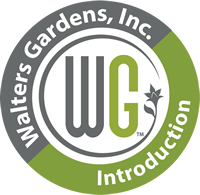Brunnera macrophylla 'Jack of Diamonds' CPBR7065 PP32752



Common Name: Heartleaf Brunnera, Siberian Bugloss
2025 Proven Winners National Perennial of the Year®
This shade perennial can best be described as a giant version of the classic 'Jack Frost'-with a twist. The huge 9-10" leaves overlap dramatically at the base giving it a shape similar to the snail delicacy escargot. Overall, the foliage is circular from a distance. The leaves have a heavy silver overlay with vivid wide, dark green veining pattern. From mid to late spring, baby blue, forget-me-not type blossoms are held in clusters above the foliage.
Brunneras are classic perennials that are treasured for their shade tolerance and lovely blooms. They make a fantastic groundcover, though the variegated forms may be slower to spread than the species. Try growing them in containers too so they will be close at hand when you want to snip a few blooms for a spring bouquet.
20ct Plug Tray |
72ct Plug Tray |













